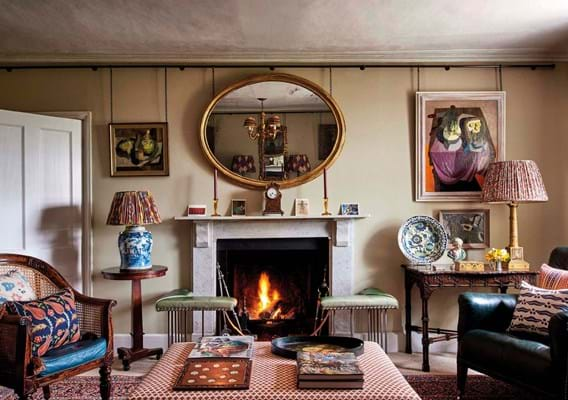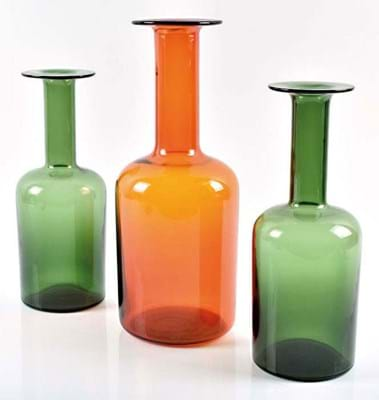“It really is about capturing what the buyer wants and that might not always be an antique. The first question I ask is ‘will it sell and will it sell well?’ – and that’s something that demands constant review.”

Liz Winnicott of Chiswick Auctions
Liz Winnicott is head of Interiors sales at Chiswick Auctions.
The west London firm’s approach to selling the bread-and-butter of the trade is evolving fast.
In the matter of a year it has moved from weekly clearance sales to fortnightly events and, since the new year, monthly ‘interiors’ sales offering items ranging from £100 to £1000-plus.
Weekly on the way out
Chiswick is not alone among UK auctioneers in shelving the weekly general sale of usually lower-value lots.
As many as one in three weekly sales has dropped off the calendar in recent years, often replaced by fortnightly or monthly auctions of accessibly-priced antiques and collectables that assume cosy titles such as At Home, Homes & Interiors, The Gentleman’s Library and the like.
The seeds of all this were sown by London’s bigger brands a decade or more ago – a recognition that wider change was afoot.
The ‘how it might look in your own home’ format has trickled down into the shires with remarkable rapidity.
Typically, the emphasis is on good-quality but ‘affordable’ middle-market furnishings in the £50-2000 price bracket suitable for the home furnisher buying across a range of periods and disciplines.
The gentleman’s library is not just the place to sell button back leather chairs and John Speed county maps. These are also the sales for taxidermy, small silver, good traditional pictures and other ‘mantiques’ (surprisingly, books are often excluded in favour of specialist sales).
Some of this is simply repackaging – a worthy attempt to breathe some new life into a difficult market for traditional furniture and chattels through a user-friendly title. How often since the days of the lifestyle magazine-style catalogues at Christie’s South Kensington have we heard that buying at auction is an alternative to high street shops and flat-pack furniture?
However, the old-school title ‘antiques and collectables’ no longer accurately describes the content of these sales. A more thoughtful approach with a specific demographic in mind is being used.
Rules relaxed

Jane Tennant of Tennants
“Targeted ‘lifestyle’ sales reflect the increasingly eclectic tastes of buyers and the way in which we now furnish our homes,” says Jane Tennant, director of Tennants in Leyburn, North Yorkshire.
“The rules have been relaxed. Antique and modern pieces of furniture are placed side by side, with taxidermy or collectable advertising signs thrown into the mix. Buyers come to browse and see what catches their eye rather than searching for a specific piece.”
Winnicott concurs. “Interiors is more than just a label change,” she says. “It reflects an evolving market – one where consumer buying patterns have changed and consumer taste has changed.
“In London there is the appetite for something a bit more cutting edge and – it has to be said – less appetite for some of the more traditional larger pieces of furniture.”
An Ercol kitchen table is an easier sell than another in Victorian mahogany; a modern mirrored glass sofa is more likely to attract bids than its tired Regency exemplar.
Surprisingly, perhaps, the selling audience is quick to learn. Within weeks Winnicott says vendors have got to grips with a new rigour paid to consignments for her monthly events.
“As soon as we started changing the sale the enquiries came in from vendors with similar items. Regular consignors quickly understood the change too,” she adds.
Better service

John Black of Sworders
Sworders in Stansted Mountfitchet moved from weekly to fortnightly sales over four years ago in pursuit, says director of 20th century decorative art and design John Black, of “a better service for both vendors and buyers”.
The average lot value is now around £150. “We continue to raise the bar,” he adds. “Gone are the days of selling multiple lots of prints and furniture. Minimum values are encouraged and our team work hard to create a mixed sale of interesting lots that will cut the cloth with the trade and our ever growing buying public.”
Inevitably via this approach the auction house will lose something. The £20 box lot still has its appeal as does the ‘broom clean’ house clearance service.
However, all successful UK regional auction houses must question if the resources spent processing low-value lots could be better applied elsewhere. It’s the old adage: it takes just as long to catalogue a £1000 lot as one that brings £10.
Online demands
The internet has been a catalyst. Photography, email enquires, condition reports and shipping are now par for the course.
Buyers are more demanding – as surely they can expect to be in the age of the 27% premium.
Providing this service to a decent standard takes time but also brings rewards, says Winnicott.
“Moving to a monthly format allows time for the object to appear online for longer, time to reach a wider market, and time for more buyers to bid. That way we start to see higher revenues and deliver a better service.”
Tennants holds more than 80 sales a year through a combination of tri-annual ‘fine’ sales, specialist sales, Country House sales plus the popular Antiques and Interiors sales, now held fortnightly.
“The internet is probably the major factor in our move away from weekly sales,” says Jane Tennant.
“Remote buying demands fuller descriptions, more photographs and condition reports and sales need to be online further in advance. That makes the logistics of a weekly sale challenging. Gone are the days when our clients were mainly locals, who turned up in the morning, viewed, bid and then took their purchases home.”
As the clientele changes, so presentation has become more important. Given the need to reach beyond the increasingly selective dealing community to sustain selling rates the ‘pile it high’ model of the town and village auctioneer is ebbing away.
On the nursery slope for new collectors it pays to make the leap of imagination from auction warehouse to home comfort a relatively easy one.
Evening and weekend openings help too. A well presented sale often leads to multiple purchases as buyers – some of them those elusive social-media savvy millennials – seek to recreate a look.
Defending the weekly sale…
Of course, not all salerooms believe the weekly sale model is unsustainable.
Norfolk auction house TW Gaze expanded its site on Roydon Road in Diss last year and opened an extra new saleroom allowing for 51 weekly sales averaging over 2000 lots plus 70 additional auctions spotlighting over 30 specialist categories. In March the firm sold more than 11,500 lots. If it ain’t broke…

Elizabeth Talbot of TW Gaze
Director Elizabeth Talbot said: “The weekly general sale is still our core mainstay of the calendar. We continue to introduce more specialist sales but we couldn’t survive on these alone. We need the balance of the two.”
However, TW Gaze now titles its weekly sales as Antiques and Interiors events.
“We have recognised that vintage and retro (not to mention modern) items sell as well as, if not better than, traditional antiques, reflecting the current trend for buyers to mix and match.
“We have to cater for how the public buy. People browse our sales as if they are at John Lewis: we lay out items in room settings and suggest ideas for viewers. We can no longer stack items up in the old-school style and hope buyers will spot something.”





















